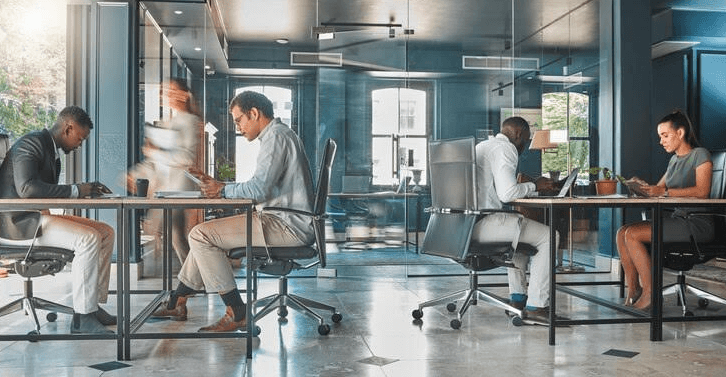Unlocking Productivity: The Evolution of Modern Workspaces

In our professional landscape, the spaces we inhabit hold a profound influence over our productivity and innovative capacities. The demand for work environments that transcend traditional offices has given rise to a notable trend – the adoption of shared office spaces. This, coupled with a deeper understanding of the psychology behind workspace design, is reshaping the very essence of how we work.
Contents
The surge in popularity of shared office spaces isn’t just a momentary trend; it signifies a strategic paradigm shift in how professionals navigate their work lives. These spaces go beyond offering mere convenience; they have become a cornerstone for a flexible and dynamic work culture, accommodating an extensive array of work styles. The departure from the rigid structure of traditional offices is deliberate, fostering an environment where spontaneity reigns, and collaboration becomes a natural byproduct.
Within the expanse of shared spaces, the encouragement of spontaneous idea-sharing creates a dynamic atmosphere, where the exchange of thoughts and innovation flourishes. Simultaneously, these spaces provide meticulously designed private areas, strategically placed to offer professionals moments of solitude for concentrated, focused thinking.
This adaptability is not just about ease; it represents a calculated, strategic choice for businesses. Shared office spaces are the nexus where the optimization of costs intersects with the cultivation of a collaborative work culture, making them a transformative force in the contemporary professional landscape.
The Psychological Impact of Workspace Design
Delving deeper into the realms of modern work, we unearth the profound significance of thoughtful workspace design. It extends beyond mere aesthetics, with designers prioritizing the comfort and overall well-being of those who occupy these spaces. Ergonomic elements, such as comfortable chairs and adjustable desks, are carefully integrated to contribute to healthier and more productive work environments. These thoughtful design elements, seemingly small, collectively create an environment where employees can immerse themselves in their tasks without the hindrance of discomfort or distractions.
Beyond Aesthetics: Inspiring Creativity
The journey into innovative workspaces transcends functionality; it aspires to actively inspire creativity. While ergonomic furniture lays the foundation, the magic unfolds with the infusion of inspiring decor, vibrant color schemes, and captivating artwork. These elements serve as catalysts, propelling creative thinking and providing a fresh perspective on the daily work routine.
Consider the transformative power of wall art—a carefully chosen piece does more than decorate. It becomes a focal point, transforming the workspace into a hub of creativity. It fosters a mindset that transcends the ordinary, encouraging individuals to approach their work with a renewed sense of innovation.
The Fusion of Diversity and Innovation
Creative workspaces become thriving grounds for innovation when they embrace diversity. Inclusivity in design and policies sets the stage for an atmosphere where every employee feels valued for their unique viewpoints. This inclusivity becomes the impetus for creative problem-solving and the generation of fresh ideas. Physical spaces in these workplaces often mirror this commitment, featuring dedicated areas celebrating different cultures or hosting events that encourage cross-cultural interactions.
The synergy born from diverse perspectives becomes a powerful force propelling innovation forward. Individuals in these environments bring a spectrum of experiences and solutions to complex challenges, fostering an atmosphere that stimulates outside-of-the-box thinking. This synergy sparks innovative solutions and breakthrough concepts.
Flexible Work Arrangements: Empowering Creativity
The realm of creativity is not confined by the constraints of time or place. Forward-thinking companies recognize this truth and offer flexible work arrangements as a means to empower employees to harness their creative moments. Remote work options and flexible hours allow individuals to synchronize their work with their peak performance times, unlocking the full potential of the workforce.
Beyond embracing flexible hours, some creative workspaces go the extra mile. They offer brainstorming sessions, and workshops, or provide access to innovation labs. These initiatives not only encourage collaboration but also create an environment where employees can explore new ideas in a structured and supportive setting.
Conclusion
In wrapping up this exploration, it’s evident that the evolution of modern workspaces is intricately intertwined with the surge in popularity of shared office spaces. These spaces, with their dynamic layouts and collaborative ethos, have become strategic choices for businesses looking to enhance productivity while optimizing costs. Simultaneously, the understanding of workspace design psychology plays a pivotal role in influencing the very fabric of our work lives.


